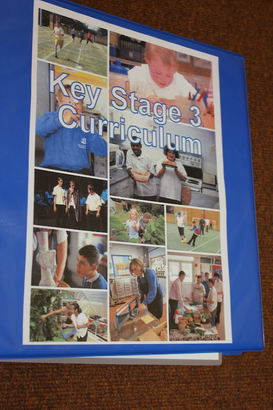
In 1994, Ware wrote an important book entitled: Educating Children with Profound and Multiple Learning Difficulties (Ware, 1994). At the time of publication, it was widely held that all children were entitled to access to the same curriculum.
This was largely driven by the fear that the basic right to education might be challenged and even withdrawn if those with SLD/PMLD/CLDD were not included within the National Curriculum.
This view was supported by other important authors such as Byers and Rose (1994) and Aird (2001).
Ten years after its inception, Richard Rose wrote a particularly illuminating sentence:
For the first time within the education system of England and Wales we have a
recognition that all pupils have the right to receive a curriculum which contains some common elements.
Rose, 1998
Reflecting on the best pedagogical thinking prior to 1988, Jean Ware states that the 'subject based nature of the National
Curriculum...has created...tensions with previous good practice' (Ware, 1994). She notes that, at that time, there was a
balance between the functional (what children need to maximise their opportunities in life) and the developmental (how children
might be taught
these things).
There is however, a difference in emphasis between the SLD school curricula and the National Curriculum, with the National Curriculum concentrating on what
society is thought to need from the individual rather than what the individual needs to cope with society. This emphasis is
a major source of conflict with good practice in SLD schools, where the
needs of the individual are seen as paramount. It is important to realise that this is a problem for all special needs education
and, indeed, all of education and is not just concerned with pupils with PMLD.
Ware, 1994

Literacy teaching for those with SLD/PMLD/CLDD is mainstream-focused. As such, it does not cater for their particular needs. A number of respected authors lament the lack of initiatives aimed at the learning needs of these particular groups of learners (Lacey et al, 2007).
In many cases, schools and teachers prefer to go with mainstream initiatives like the National Literacy Strategy. There are two important reasons for this:
- The fear of censure by Ofsted if they step outside of national directives; and
- The fact that the vast majority of teachers currently employed in special schools have been primarily trained in mainstream education - this has meant that they have only known the National Curriculum since 1988 and variations of the National Literacy Strategy.
(Lacey et al, 2007)
The validity of a National Curriculum type subject based pedagogy has been regularly questioned (Pease and Chapman, 1992; Hinchcliffe, 1994; Grove and Peacey,1999; Aird and Aird, 2006). Carpenter noted that:
Much is written in the current curriculum literature about entitlement. Children with SEN are entitled to have their individual needs met, but a blanket delivery of a rigid, subject-bound
curriculum may not be the most effective means of achieving this.
Carpenter, 1992
In 1998, Richard Rose wrote:
It is now more than ten years since the introduction of the National Curriculum in England and Wales,
and still the debate surrounding its appropriateness and accessibility for pupils with special educational needs continues.
Rose, 1998
How did the National Curriculum change the way that you structure your school's curriculum and influence classroom practice?
Has your curriculum changed in response to changes in the National Curriculum framework since
its inception?
Some two years after its advent, studies conducted by students of London University's Institute of Education discovered
only a loose association between the curriculum content being delivered to those with SLD/PMLD/CLDD
and the
National Curriculum.
In other words, effective curricula used in special schools only loosely adhered to the National Curriculum.

Bear in mind the findings of London University's Institute of Education (set out on the previous page). Are these findings true of your school? Have they ever been?
Ware saw a real danger of the National Curriculum replacing previous good practice.
The process involved is still one of examining the activities in which pupils are taking part in order to identify the (National Curriculum subject) content within them.
Ware, 1994
Where is there evidence in your school that the National Curriculum has enhanced practice?
Would you consider your curriculum to be 'subject driven' or 'learner centred'?
Are these characterisations helpful?
Advocates of the National Curriculum will argue that they have been teaching through National Curriculum subjects very successfully for years:
- Travel training is taught through Geography;
- Cooking is taught through D&T; and
- Other living skills can be taught through PSHCE.

Aird, R. and Aird, K. (2006) Distinctive pedagogy and the development of specialist curriculum matter in the education of pupils who have profound and multiple learning difficulties, The SLD Experience, 46; 15-19.
Aird, R. (2001) The Education and Care of Children with Severe, Profound and Multiple Learning Difficulties, London: David Fulton.
Byers, R. (1994) Teaching as Dialogue: Teaching Approaches and Learning Styles in Schools for Pupils with Learning Difficulties, in: Coupe-O'Kane, J. and Smyth, B. (eds), Taking Control, London: David Fulton.
Byers, R. and Rose, R. (1994) Schools Should Decide..., in: Rose, R., Fergusson, A., Coles. C., Byers, R. and Banes, D. (eds) Implementing the Whole Curriculum for Pupils with Learning Difficulties, London: David Fulton.
Carpenter, B. (1992) The Whole Curriculum: Meeting the Needs of the Whole Child, in: Bovair, K., Carpente, B. and Upton, G. Special Curricula Needs, London: David Fulton.
Carpenter, B. (2010) Curriculum Reconciliation and Children with Complex Learning Difficulties and Disabilities, London: Specialist Schools and Academies Trust.

Grove, N. and Peacey, N. (1999) Teaching subjects to pupils with profound and multiple learning difficulties, British Journal of Special Education, 26; 83-86.
Hinchcliffe, V. (1994) A special special need: self-advocacy, curriculum and the needs of children with severe learning difficulties, in: Sandow, S. (ed.) Whose Special Need? London: Paul Chapman.
Lacey, P., Layton, L., Miller, C., Goldbart, J. and Lawson, H. (2007) What is literacy for students with severe learning difficulties? Exploring conventional and inclusive literacy, Journal of Research in Special Educational Needs, 7 (3), 149-160.
Pease, L. and Chapman, N. (1992) Disapply First, Modify Later?, British Journal of Special Education, 19 (3), 103-104.
Rose, R. (1998) The curriculum. A vehicle for inclusion or a lever for exclusion?, in: Tilstone, C., Florian, L. and Rose, R. (eds) Promoting Inclusive Practice, London: Routledge.
Ware, J. (1994) Implementing the 1988 Act with Pupils with PMLDs, in: Ware, J. (ed.) Educating Children with Profound and Multiple Learning Difficulties, London: David Fulton.